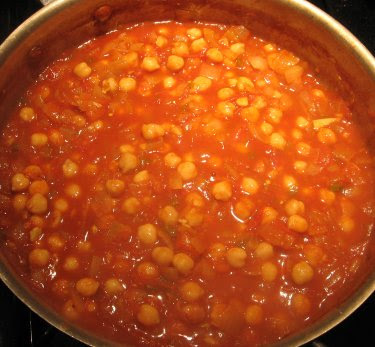
A bit ago, we broke into the freezer stash to make polenta for the first time. This was an excellent idea.
Cooking polenta is much less complicated than you might expect from all the instructions floating around. Polenta = grits. There's nothing fancy or difficult involved, and no intimidation necessary. We certainly didn't "pour the grain into the boiling water in a steady stream" et al. We just mixed the grain and the water, stirred it, and cooked it. No problems whatsoever.
I do really wish I'd realized that polenta = grits when I lived in North Carolina, however. Just imagine all the awesome diner breakfasts I could have had! Polenta with poached egg, hot sauce, and a cup of coffee!
Homemade polenta has the same benefit as, uh...most other things you cook at home. That is, you can make it exactly like you want it. If you want soupier polenta, you can add more water. If you want hard polenta, you can let it solidify and cut it up. If you want cheesy polenta, you can add shredded cheese to the finished product. If you want plain essence-of-corn polenta with no ingredients but water and corn, that's fine too.
Plain bare-bones polenta
water
coarse cornmeal
pinch of salt
The proportions here depend on how soupy you want your finished product. I'd use about a cup of cornmeal and five cups of water to start.
In a heavy-bottomed pot, whisk the water and cornmeal together well, eliminating any lumps. Add a pinch of salt. Put the pot over medium or medium-high heat and cook it, stirring most of the time, until the cornmeal is cooked and delicious. This will take about a half hour, but it's really not a big deal. If the cornmeal absorbs too much water for your liking, you might add more liquid. Otherwise, all you have to do is stir.
We had our polenta soupy, i.e. right out of the pot. If you want hard polenta, just pour it into a buttered/olive oiled casserole pan and let it cool. Then you can cut it up and fry it for breakfast later. Oh yeah.
So it's clearly great to have your polenta by itself, or with that poached egg, hot sauce, and coffee. We had ours with chickpea tomato curry. I probably should say "curry", since it's not as though I was making a specific traditional spice combination. I just haven't made the effort to go find bulk turmeric et al, so the main spices in all our so-called curries are ginger, cumin, and this terrible generic curry mix. The results are still pretty good, but some black mustard seeds and garam masala would definitely be welcome. Mental note: never throw out/give away your entire spice cabinet when you move cross-country ever again.
 Poorly lit chickpea tomato curry
Poorly lit chickpea tomato curry
olive oil
onion
garlic
jalapeño/other hot pepper
(fresh ginger if you have any)
cooked chickpeas (canned or otherwise)
tomatoes
salt, pepper
powdered ginger, cumin, curry powder (or, realistically, whatever delicious curry spices you want)
I almost automatically wrote a nice intro paragraph about putting on your pot of rice first. HA! Instead: start cooking your polenta first. If you have a nice person who will stand around and continually stir it while you make the curry, all the better.
Ok! Chop up an onion and a handful of garlic cloves, then sweat them in olive oil over medium heat. Mince maybe half a jalapeño pepper and add it as well. If you have fresh ginger, excellent. Peel it, using the spoon trick: scrape the knob with a teaspoon and you'll remove the skin without wasting huge pieces of usable ginger. Mince it finely and throw it into the pan as well.
Let those cook together for a minute or two while you prep tomatoes. I used a combination of canned tomato puree and maybe four or five of my frozen-from-summer tomatoes, which worked fine. I think I'd cut up some canned whole tomatoes if I didn't have any frozen ones, but just using puree or whatever you have on hand should be fine. In summer you of course should use all the real tomatoes in the land. So. Chop any solid tomatoes into reasonable pieces and throw them into the pan.
Give everything a few minutes to cook down. The time here is going to depend on whether you need to reduce tomato pieces or just heat puree. Reducing tomatoes will take longer. I'd give it at least five minutes, more if needed.
Drain your chickpeas and throw them into the pan. Salt, pepper, and otherwise spice as appropriate. If you used fresh ginger, don't put additional powdered ginger in; I'm just saying. If things look too thick, add some water to thin the business out.
Now you can essentially let everything stew together until it's obviously delicious and you're ready to eat.
Put some polenta (or, yes, you can use rice, or whatever) into a bowl. Make a dent in the top like you were serving mashed potatoes, if you want. Then add a massive and exciting amount of curry. If there's anything you want to strew artfully over the top, like chopped cilantro leaves or maybe roasted peanuts, be my guest.
Now eat it.

The leftovers are awesome, and clearly better lit.
When you run out of the curry, you can have any polenta left with that poached egg and hot sauce. Mine was actually fried, due to serious lack of poaching skills. It doesn't matter. You could even have polenta and curry with the fried egg on top. It would still be delicious.